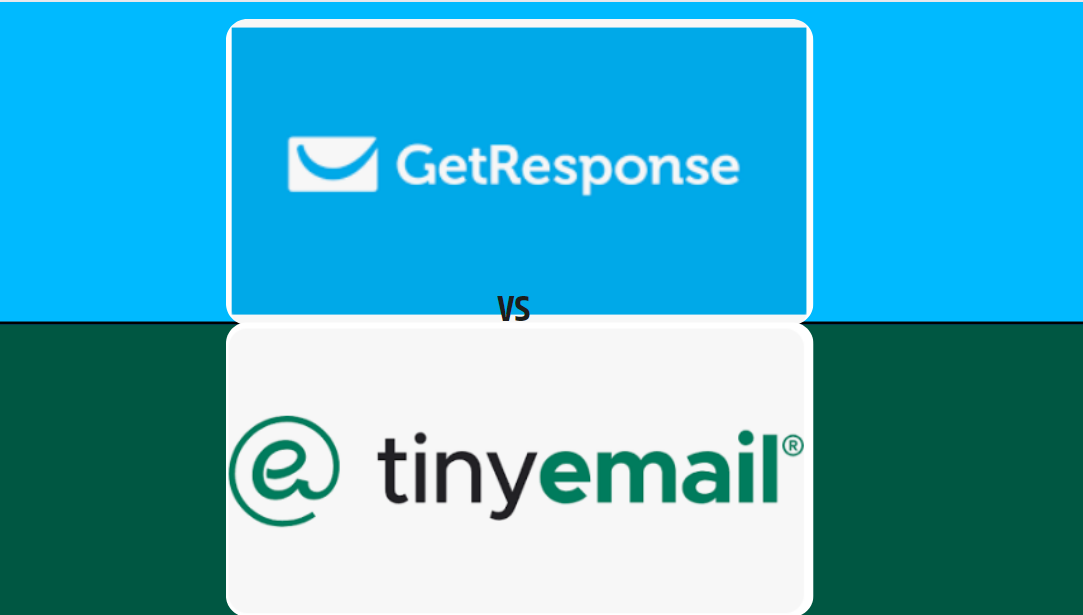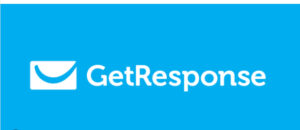This article will thoroughly explore and compare two key contenders, GetResponse vs TinyEmail, delving into their features, usability, customer support, and pricing structures. Understanding these critical aspects is paramount for businesses looking to make an informed decision and enhance their email marketing strategies.
Table Of Content
Importance of Choosing the Right Email Marketing Platform
Beyond a technical decision, selecting an email marketing platform is a strategic choice influencing business growth and customer engagement. The chosen platform shapes how a brand interacts with its audience, impacting visibility and relationship-building efforts.
Overview of GetResponse
GetResponse has solidified its standing as a leading email marketing platform, offering a comprehensive suite of tools to streamline and enhance marketing efforts. From powerful automation to advanced analytics, GetResponse caters to businesses of all sizes. The platform’s transparent pricing structure enables users to align their chosen plan with specific needs.
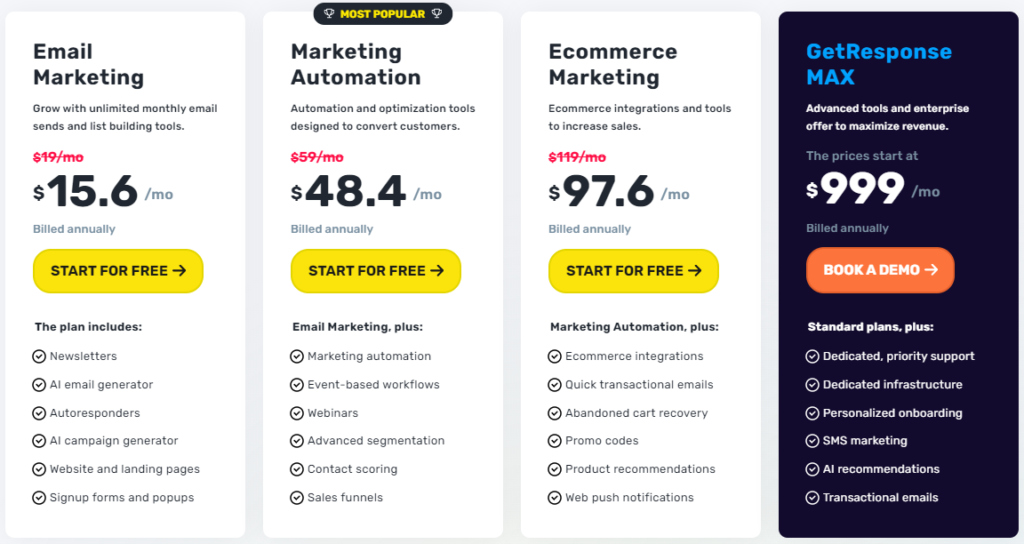
Overview of TinyEmail
TinyEmail, a relative newcomer, has caught attention for its simplicity and user-friendly interface. While lacking some features of more established platforms, its focus on straightforward yet powerful solutions makes it appealing, particularly for small to medium-sized businesses. An examination of TinyEmail’s pricing structure is crucial for understanding its scalability and overall value for money.
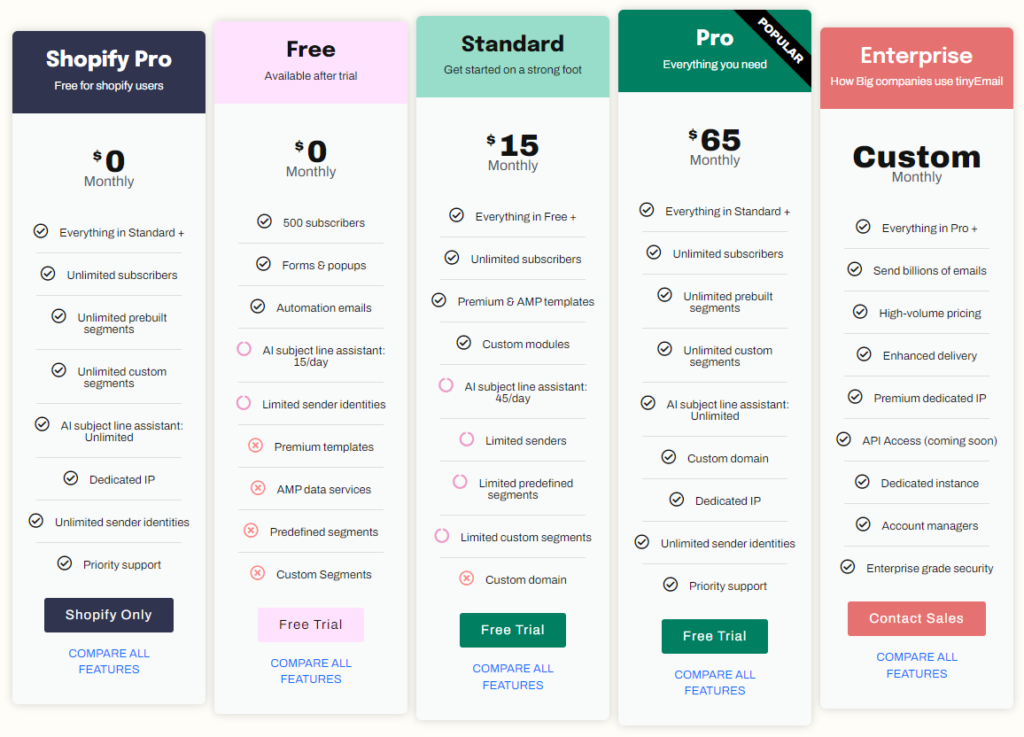
Head-to-Head Comparison: GetResponse vs TinyEmail
User Interface and Ease of Use
The user interface is pivotal to user experience. GetResponse boasts a user-friendly interface with intuitive navigation. How does this compare to TinyEmail in terms of ease of use?
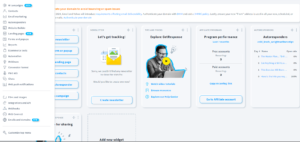
Tiny Email
Tiny Email, with its focus on simplicity, tends to be more budget-friendly, particularly for small businesses or individual marketers. The pricing is straightforward, and while it may lack some advanced features, it provides good value for those who need basic email marketing functionalities.
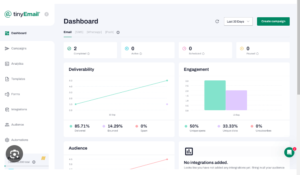
Email Campaign Creation and Automation
Effective email campaign creation and automation are vital. We’ll analyze the capabilities of both platforms to determine which one offers more flexibility and efficiency.
Automation Features
GetResponse
GetResponse shines in its automation capabilities. It offers a robust automation workflow builder that lets you create complex, trigger-based campaigns. This tool is incredibly useful for nurturing leads and personalizing customer journeys based on their interactions with your emails. Additionally, GetResponse integrates with a variety of CRM systems, enhancing its automation potential.
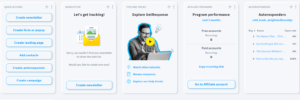
Tiny Email
Tiny Email provides basic automation features that are suitable for straightforward email sequences. While it may lack the advanced automation triggers and segmentation options found in GetResponse, it remains a competent choice for businesses that require simple, automated follow-up emails.
Analytics and Reporting
Analyzing email campaign performance is crucial for refining strategies. We’ll explore how GetResponse and TinyEmail stack up in providing insightful analytics and reporting tools.
GetResponse Analytics and Reporting
-
Email Open and Click-through Rates: This is one of the most basic yet crucial metrics. It tells you how many recipients opened your email and how many clicked on the links within it. This data helps in understanding what kind of content engages your audience.
-
Subscriber Growth Over Time: This feature tracks the growth of your email list, helping you understand how effective your list-building strategies are.
-
Geolocation Tracking: Geolocation tracking enables you to see where your subscribers are located. This can be pivotal for businesses targeting specific geographical locations or tailoring content based on regional preferences.
-
Bounce and Unsubscribe Rates: Monitoring how many emails were not delivered (bounced) and how many subscribers opted out (unsubscribed) after a campaign can provide insights into the relevance and quality of your content.
-
Social Sharing and Forwarding: This feature tracks how many subscribers are sharing your emails on social media or forwarding them to others, which is a good indicator of the content’s appeal and reach.
-
Automation Reports: For automated email sequences, this tool can track the performance of each email in the series, helping you fine-tune your automation strategy.
-
Segmentation Reports: These reports provide insights into how different segments of your audience are responding to your emails, enabling more targeted and effective email marketing strategies.
-
Conversion Tracking: If you have set up specific goals, like product purchases or sign-ups, GetResponse can track how many conversions are generated from your email campaigns.
-
Email ROI: For businesses focused on the bottom line, this feature calculates the return on investment for your email campaigns, factoring in the costs and revenues associated with them.
-
Real-time Analytics: Offering real-time data, this feature allows you to see how your emails are performing as soon as they are sent out.
-
Custom Reports: You can create custom reports based on specific criteria or metrics that matter most to your business.
-
A/B Testing Results: If you run A/B tests on your email campaigns, GetResponse provides detailed reports on which version performed better, helping in optimizing future emails.
In conclusion, GetResponse’s Analytics and Reporting tools offer a comprehensive suite of features that empower marketers to deeply understand their audience’s behavior and preferences. These tools, ranging from tracking email open and click-through rates to advanced segmentation reports and conversion tracking, provide valuable insights for refining email marketing strategies. With real-time analytics, custom reports, and A/B testing results, GetResponse enables businesses to make informed, data-driven decisions, enhancing their email campaign’s effectiveness and ultimately driving better engagement, reach, and conversions. This suite of analytics tools is an indispensable asset for any marketer looking to optimize their email marketing efforts and achieve measurable success.
TinyEmail Analytics and Reporting
Tiny Email is an email marketing solution tailored for small-scale businesses or individual users, emphasizing ease of use and straightforward functionality. Here’s a description of its potential analytics and reporting capabilities, rephrased for clarity and variety:
-
Engagement Metrics: Tiny Email would typically offer fundamental engagement metrics, such as how many recipients open emails (open rates) and the frequency of clicks on links within the emails (click-through rates). These metrics are vital for evaluating initial audience engagement.
-
List Growth Monitoring: Tracking the expansion or reduction of your email list is a key feature, providing insights into the effectiveness of your strategies for audience development.
-
Analysis of Bounces and Unsubscribes: Understanding the rate of emails not delivered (bounces) and how many subscribers opt out (unsubscribe rate) is crucial for assessing your email list’s health and your content’s relevance.
-
Basic Conversion Tracking: Tiny Email might offer elementary tracking of key actions like sales or sign-ups, essential for understanding the impact of your email campaigns on these objectives.
-
Segment Engagement Overview: This feature would offer a breakdown of how various audience segments interact with your emails, aiding in customizing content more effectively.
-
Device and Geographical Analytics: Information on the devices (like mobile or desktop) used by subscribers to read your emails and their locations can be crucial for optimizing the layout and content of your emails.
-
Comparative Campaign Analysis: The ability to compare different email campaigns side-by-side to determine what resonates best with your audience could be a feature of Tiny Email.
-
Immediate Data Access: Offering real-time analytics, this feature would allow immediate insight into the performance of an email campaign post-dispatch.
-
Summarized Automated Reports: For user convenience, Tiny Email might generate automated summaries of reports, highlighting essential metrics and trends in a digestible format.
-
Graphical Data Representation: Presenting data in visual formats like charts or graphs would make analytics more accessible, especially for users without extensive data analysis experience.
-
Outcome of A/B Testing: Should Tiny Email support A/B testing, it would likely provide insights on which email variations are more effective, based on open rates, click-through rates, and other metrics.
Tiny Email’s focus is to present analytics and reporting in a user-friendly manner, making it easy for small business owners or individual users to quickly grasp and respond to their email marketing campaign’s performance. This approach is especially useful for those who prefer a straightforward, no-frills tool for effective email marketing.
Customer Support and Resources
Robust customer support is essential for a smooth user experience. We’ll delve into the customer support services of GetResponse and TinyEmail, evaluating their responsiveness and effectiveness.
GetResponse Customer Support and Resources
-
Support Channels: GetResponse typically offers a wide range of support channels, including email support, live chat, and phone support. This diversity in support channels caters to various preferences and needs.
-
Comprehensive Knowledge Base: They usually have an extensive knowledge base that includes articles, tutorials, and FAQs. This resource is invaluable for self-help and learning.
-
Training and Webinars: GetResponse often provides additional learning resources like webinars, training sessions, and video tutorials, which are beneficial for users to understand the full capabilities of the platform.
-
Community Engagement: Platforms like GetResponse often have a community forum or a platform for users to engage, share tips, and seek advice from fellow marketers.
-
Multilingual Support: Catering to a global audience, GetResponse likely offers support in multiple languages, which is a significant advantage for international users.
-
Dedicated Account Management: For premium accounts, GetResponse may offer dedicated account managers to provide personalized support and guidance.
Tiny Email Customer Support and Resources
-
Support Channels: Being a smaller, more streamlined service, Tiny Email’s support channels might be more limited, often focusing on email support and possibly live chat, but less likely to include phone support.
-
Simplified Knowledge Base: Tiny Email is expected to have a knowledge base, but it might be more concise and straightforward, focusing on the core functionalities and common issues.
-
Basic Guides and FAQs: They likely provide basic guides and FAQs to help users navigate the platform and troubleshoot common problems.
-
Direct Email Support: For more personalized assistance, Tiny Email might emphasize direct email support, which can be efficient for resolving specific issues.
-
Limited Training Resources: Unlike GetResponse, Tiny Email might not offer extensive training resources like webinars or in-depth tutorials, in line with their emphasis on simplicity and ease of use.
-
Community Forum: A community forum or user group might be less prevalent or less active compared to larger platforms like GetResponse.
Comparative Analysis
-
Scale and Depth: GetResponse, being a larger platform, offers more comprehensive and varied support and learning resources compared to Tiny Email. This includes multilingual support and dedicated account managers for premium users.
-
Simplicity vs. Comprehensiveness: Tiny Email focuses on simplicity, which is reflected in their more basic and straightforward support and resources. This approach can be advantageous for users who prefer ease of use and quick solutions.
-
Learning and Development: GetResponse provides more opportunities for learning and development, which is beneficial for users who wish to delve deeper into email marketing strategies and tools.
-
Community Involvement: The presence of a more active community forum in GetResponse can be a significant resource for peer-to-peer learning and networking.
In summary, GetResponse offers a more robust and diverse range of customer support and resources, catering to a wide range of user needs and preferences. Tiny Email, on the other hand, focuses on direct, simplified support, aligning with its overall ethos of simplicity and ease of use, which might be more appealing to small businesses or individual entrepreneurs looking for a straightforward email marketing solution.
Case Studies and User Testimonials
Real-world examples provide valuable insights. We’ll showcase case studies and testimonials from businesses that have leveraged GetResponse and TinyEmail, offering a glimpse into the platforms’ impact on marketing strategies.
GetResponse Case Studies and User Testimonials
GetResponse, as a larger and more established platform, features diverse and detailed case studies. These case studies often span various industries, offering in-depth insights into how different businesses leverage GetResponse’s features for their marketing success. The platform also boasts global user testimonials, providing a broad perspective on its performance across different markets. These testimonials and case studies usually include specific success metrics and data-driven insights, giving potential users concrete evidence of the platform’s effectiveness.
Tiny Email Case Studies and User Testimonials
Tiny Email, being more focused on small businesses and individual entrepreneurs, presents case studies and testimonials that are more relatable to its target audience. These often highlight the success stories of smaller-scale implementations, demonstrating the platform’s effectiveness in a niche context. The testimonials typically come from similar-sized businesses, emphasizing the platform’s ease of use, efficiency, and straightforward functionality. This focus on practical and direct examples aligns well with the needs of smaller businesses or individuals who prefer a no-frills email marketing solution.
Comparative Analysis
The scale and diversity of GetResponse’s case studies and testimonials reflect its larger user base and adaptability across various sectors, offering a wide range of examples and success stories. In contrast, Tiny Email’s case studies and testimonials are more concentrated and pertinent to small businesses or individual users, focusing on quick wins and simple strategies.
GetResponse’s case studies are generally more detailed, featuring in-depth analyses and data-backed results, while Tiny Email’s are about straightforward success stories and practical benefits. The global user base of GetResponse offers a broader range of perspectives, whereas Tiny Email’s testimonials likely resonate more with small businesses and solo entrepreneurs.
In essence, GetResponse provides a broad and varied range of case studies and user testimonials, showcasing its effectiveness in different industries and markets. Tiny Email, meanwhile, focuses on case studies and testimonials that are more directly relevant to its core audience, emphasizing practicality and ease of use. Both approaches offer valuable insights but cater to different user needs and preferences in their email marketing endeavors.
Pricing Comparison
Crucial to decision-making is a detailed examination of the pricing structures of GetResponse and TinyEmail. We’ll provide a comprehensive breakdown, ensuring readers understand the cost implications and value offered by each platform.
Making the Decision: Factors to Consider
When deciding between GetResponse and TinyEmail, aligning features with business goals is crucial. We’ll outline key factors, including pricing, business size, goals, and specific requirements to help readers make an informed decision.
Target Audience and Scale
-
GetResponse: Ideal for businesses of all sizes, from small to large enterprises. Its comprehensive feature set and scalability make it suitable for companies with more complex marketing strategies and a need for extensive automation and integration options.
-
Tiny Email: Best suited for small businesses and individual entrepreneurs. Its focus on simplicity and ease of use makes it a great choice for those who are new to email marketing or have more straightforward needs.
Features and Functionalities
-
GetResponse: Offers a wide range of advanced features including detailed analytics, automation, segmentation, A/B testing, and integrations with various platforms. It’s designed for users who need a comprehensive tool to manage complex email marketing campaigns.
-
Tiny Email: Provides basic email marketing functionalities like email creation, simple analytics, and subscriber list management. It’s tailored for users who need a no-frills, easy-to-use platform without overwhelming features.
Pricing and Budget Considerations
-
GetResponse: Generally, GetResponse has a tiered pricing structure that increases with the number of subscribers and the level of features required. It may be more expensive but offers a broader range of capabilities.
-
Tiny Email: Likely to be more budget-friendly with a simpler pricing structure, making it an attractive option for small businesses or individuals with limited email marketing budgets.
User Experience and Learning Curve
-
GetResponse: While offering robust features, it also comes with a steeper learning curve. Suitable for those who have the time and resources to invest in learning the platform.
-
Tiny Email: With its emphasis on simplicity, it offers an intuitive user experience and is easier for beginners to navigate, requiring less time to get up to speed.
Customer Support and Resources
-
GetResponse: Typically provides extensive customer support including email, chat, and phone support, along with a rich library of resources like tutorials, webinars, and a community forum.
-
Tiny Email: Offers more basic support options, likely focusing on email support with a simple knowledge base, suitable for solving straightforward issues.
Customization and Integration
-
GetResponse: Offers higher levels of customization and a wide range of integration options with other tools and platforms, beneficial for businesses looking for a highly tailored email marketing solution.
-
Tiny Email: May offer limited customization and fewer integration options, but this can be sufficient for users who prioritize ease of use over customization.
Making the Decision
The choice between GetResponse and Tiny Email hinges on your specific needs, budget, and the scale of your email marketing endeavors. If you require a comprehensive tool with advanced features and are willing to invest in learning and budget, GetResponse is the way to go. On the other hand, if you prefer a more straightforward, cost-effective solution that’s easy to use, especially if you’re just starting out or have simpler requirements, Tiny Email would be a more suitable choice. Consider your long-term marketing goals, the resources you can allocate, and the level of complexity you need in your campaigns to make the best decision.
Conclusion
In conclusion, the choice between GetResponse and TinyEmail depends on a thorough understanding of your business requirements, including budget constraints. By selecting the platform that aligns best with your email marketing objectives and budgetary considerations, you can enhance your communication strategies and drive meaningful engagement with your audience. Choose wisely, considering both features and pricing, and propel your business forward in the dynamic realm of email marketing.


